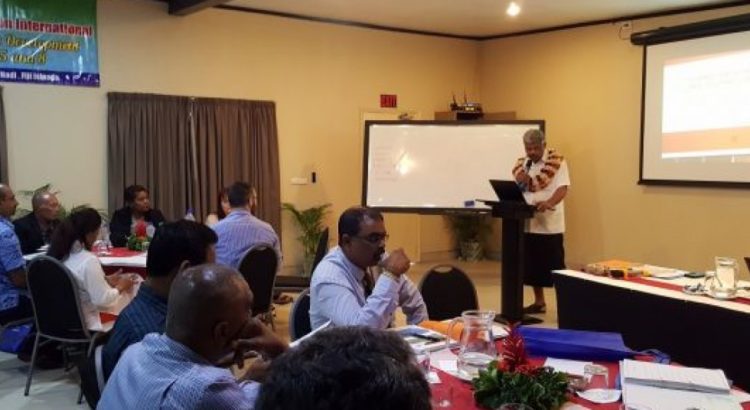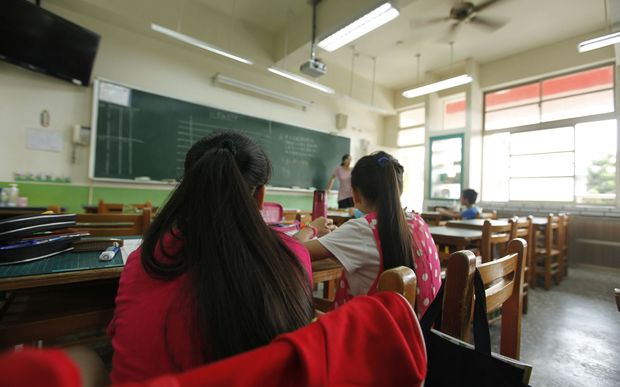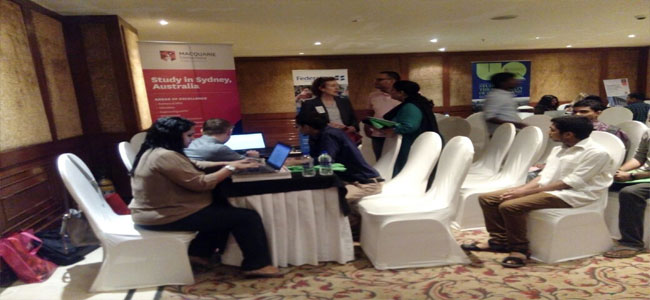Oceania/Islas FIJI/PrensaIE
Los dirigentes de los sindicatos de docentes han iniciado el primer taller de consulta regional sobre el Programa de Educación 2030, con el fin de reflexionar sobre distintas maneras de lograr los Objetivos de Desarrollo Sostenible en el Pacífico.
El taller de consulta se celebra después de que los Estados miembros de las Naciones Unidas aprobaran en noviembre el Marco de Acción para la Educación 2030, un marco cuyo objetivo es respaldar a todos los países para realizar su propia visión y ambición de la educación, especialmente dentro del Objetivo de Desarrollo Sostenible (ODS) nº 4 y sus metas. El Council of Pacific Education (COPE) y la Internacional de la Educación (IE) organizaron el taller conjuntamente.
Garantizar una educación de calidad inclusiva y equitativa para todos en 2030 en la región del Pacífico
El taller, que tendrá lugar del 6 al 8 de septiembre en Nadi, Islas Fiyi, y en el que participan en torno a 40 dirigentes sindicales de la región del Pacífico, se centra en fomentar la comprensión y el conocimiento que poseen los docentes y los dirigentes sindicales sobre el ODS 4, con el fin de garantizar una educación de calidad inclusiva y equitativa y de promover oportunidades de aprendizaje permanente para todos hacia el año 2030. Su objetivo es desarrollar un entendimiento común acerca de los ODS 4, 5 y 8, así como diseñar una hoja de ruta y un plan de acción sindical para lograr la educación de calidad y las metas previstas para 2030.
En su discurso de apertura, el Asesor de Política Social de la Secretaría del Foro de las Islas del Pacífico, Filipe Jitoko, recordó a los asistentes la Iniciativa del Plan del Pacífico y el Marco de Desarrollo para la Educación del Pacífico. Asimismo, explicó a los delegados de qué forma está integrado el ODS 4 en los planes educativos regionales y nacionales, así como la colaboración que existe entre los socios regionales e internacionales en el Pacífico. Por otra parte, Jitoko puso de manifiesto que, a pesar de los muchos desafíos a los que se enfrenta la región, los gobiernos están comprometidos a superar los obstáculos y a responsabilizarse ante los ODS, especialmente en lo que respecta a prestar una educación de calidad para todos.
Proporcionando una perspectiva global sobre el Programa de Educación 2030, el Secretario General del Council of Pacific Education (COPE) y Coordinador Principal de la región de Asia Pacífico de la IE, Govind Singh, destacó el proceso consultivo de desarrollo de los ODS basado en las lecciones aprendidas de los anteriores Objetivos de Desarrollo del Milenio (ODM), los objetivos de la Educación para Todos (EPT), el viaje desde Jomtien a Incheon a través de Dakar, así como el papel fundamental que desempeñan los sindicatos a la hora de garantizar el cumplimiento de los objetivos educativos para el año 2030.
Lograr el Programa de Educación 2030 y los ODS, una responsabilidad de los gobiernos del Pacífico
La representante de la UNESCO en Bangkok, Malisa Santigul, ofreció una breve descripción del ODS 4 y aportó varias actualizaciones mundiales y regionales, presentando los progresos realizados por los países del Pacífico. En su intervención prosiguió informando a los delegados sobre los desafíos a los que se enfrenta la región, e hizo hincapié en cómo los sindicatos de docentes pueden participar en la implementación y el seguimiento del ODS 4 en los distintos países.
En el transcurso del taller, los participantes elaborarán planes de acción nacionales para implantar estrategias de incidencia efectivas, con el fin de influir en los gobiernos nacionales y garantizar la plena implementación de los ODS y sus metas.
Fuente: https://www.ei-ie.org/spa/detail/15344/los-sindicatos-de-docentes-del-pac%C3%ADfico-trabajan-para-implementar-el-programa-2030













 Users Today : 41
Users Today : 41 Total Users : 35460058
Total Users : 35460058 Views Today : 57
Views Today : 57 Total views : 3418688
Total views : 3418688